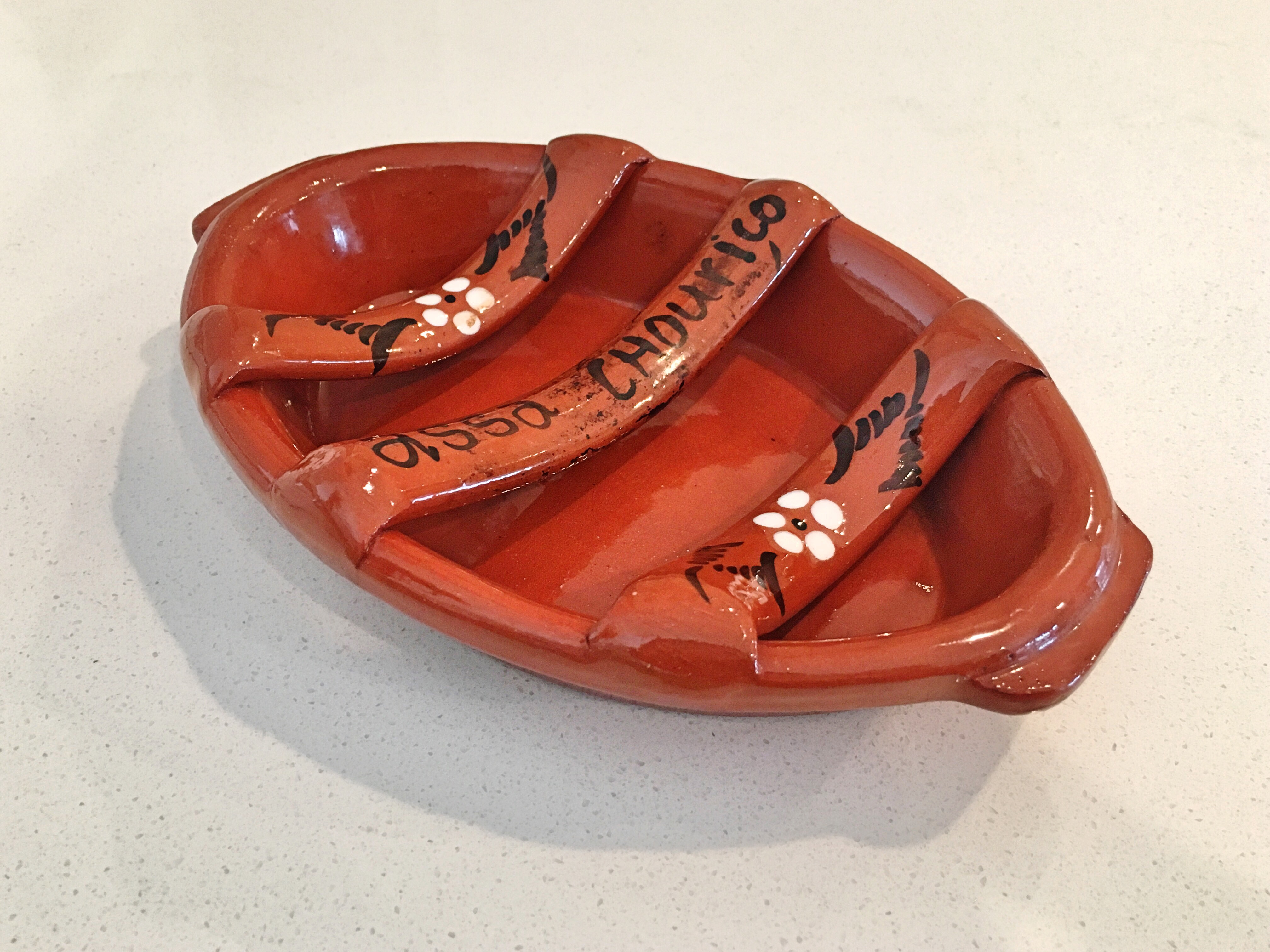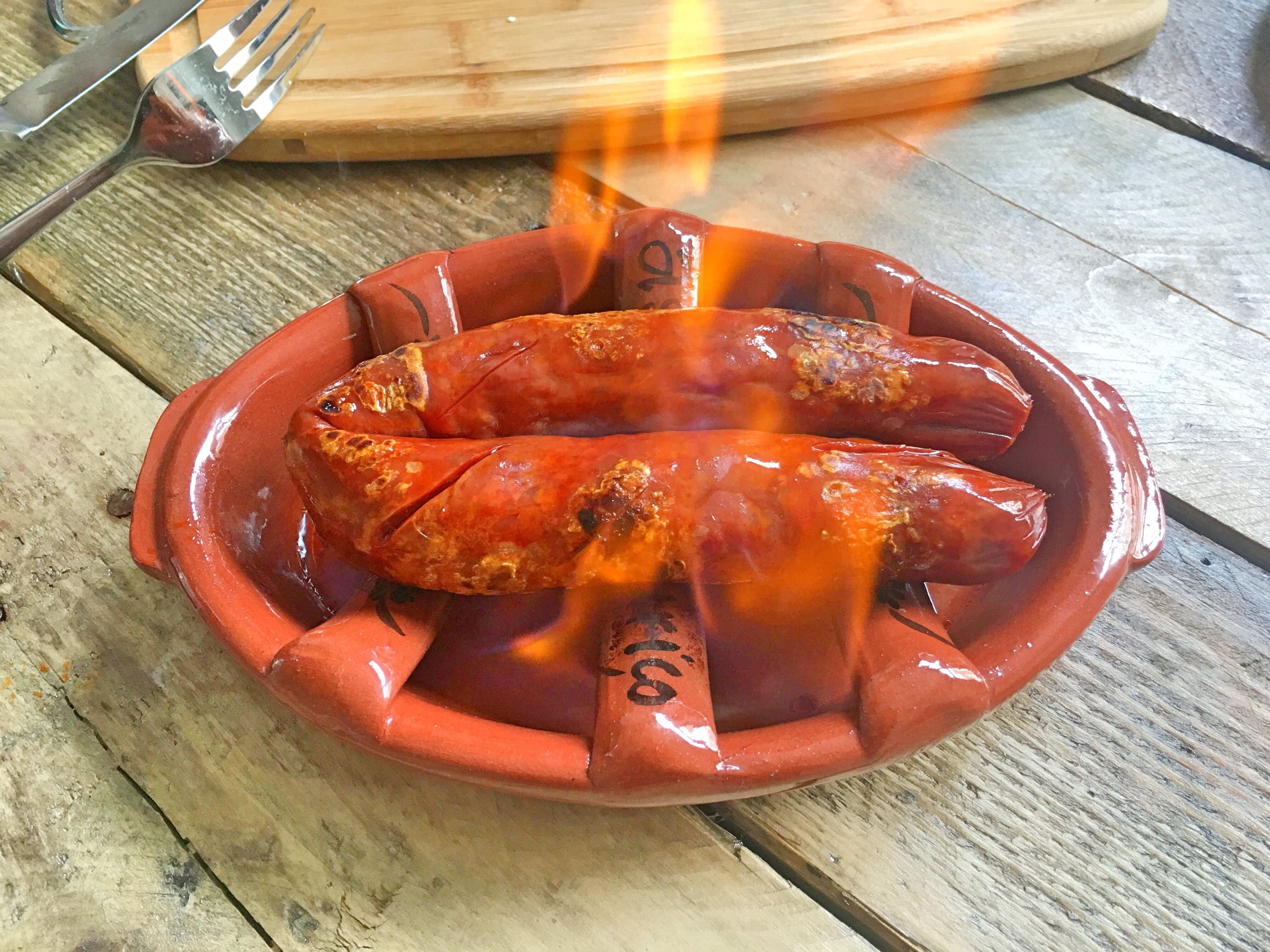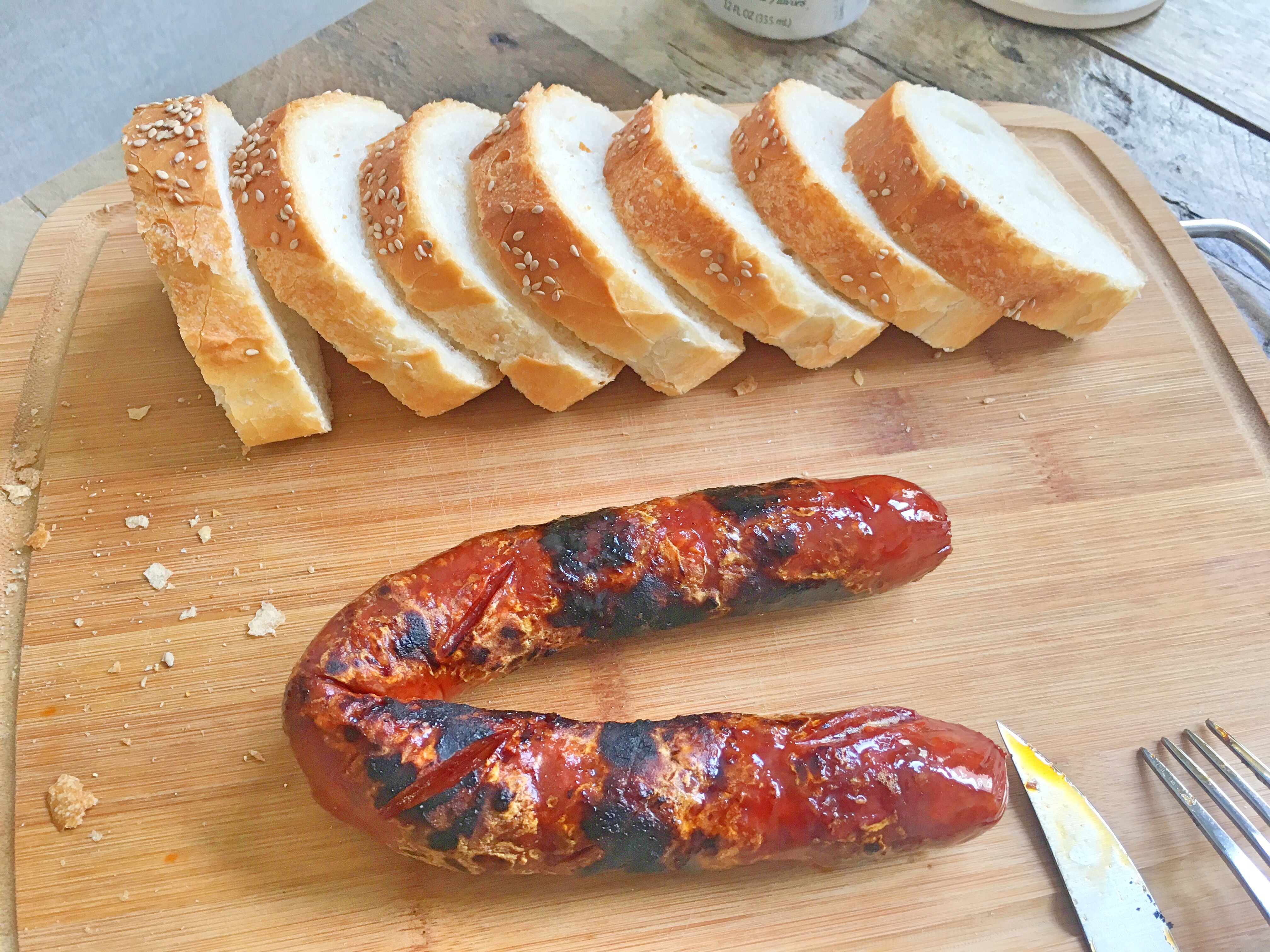I get very frustrated sometimes when I talk about one of my favorite foods from Portugal, chouriço, and get questioned – or worse, corrected! – about it being Spanish. To be very clear: chouriço is from Portugal, chorizo is from Spain. It’s an Iberian food with the same origin but with regional differences. Within Portugal itself, there are several varieties – as diverse as the regions in which they are made. And once you see how much fun Portuguese people have eating this national culinary specialty, you’ll never associate chouriço with Spain again.
If you’ve ever been to Portugal, you may have seen a lot of clay articles at souvenir stores which look pretty, but you’re not really sure what they’re for. Point in case: the image below.

You might wonder why you’d want a little clay boat thingamajig with some pretty paintings on it. Trust me, you want it! It’s called an assador and I’m going to show you how you’re supposed to use it.
Find yourself some Portuguese chouriço, and remove the packaging. Add some isopropyl alcohol to the bottom of the assador (sometimes I add some whiskey to the mix, to add flavor). Make small incisions or poke the chouriço with a fork and place it on the slats. Light the alcohol at the bottom with a match and enjoy the show! You have basically created a mini, portable indoor barbecue. You can turn the chouriço over once or twice, until it’s as cooked as you like it. Cut into pieces and serve!


This is one of my favorite party snacks to make for people, especially when served with bread, cheese and olives. Guests love watching the chouriço cook right in front of them (which is even more spectacular when the lights are dimmed) almost as much as they love eating the cooked sausage.
You can use an assador to cook one of the many varieties of enchidos (types of Portuguese sausages), that include chouriços, linguiças, farinheiras and alheiras (these ones are pork-free). I recommend trying as many of these enchidos as you can – I support all research that involves eating good food.
The number of shapes of assadores you can find in Portugal are almost as many as the varieties of chouriços and enchidos. A common shape for an assador is a pig. But perhaps the most unusual one I’ve found is a black clay one from Molelos (below) that my parents have. Molelos is known for its unusual black clay pottery (pots, pans and kitchenware). It’s ideal if you have a monochrome décor in your kitchen that you want to stick to, or if you just prefer the simplicity of the solid black color.

Now, after reading all this, wouldn’t you agree Portugal does chouriço better?



Choriço assado’s my favourite Portuguese snack food, bar none. I adulterate it sometimes with spicy Savora mostarda if I can get my hands on some, but otherwise some bread will do just fine.
I hope other people read this tip and try it out!
*chouriço!